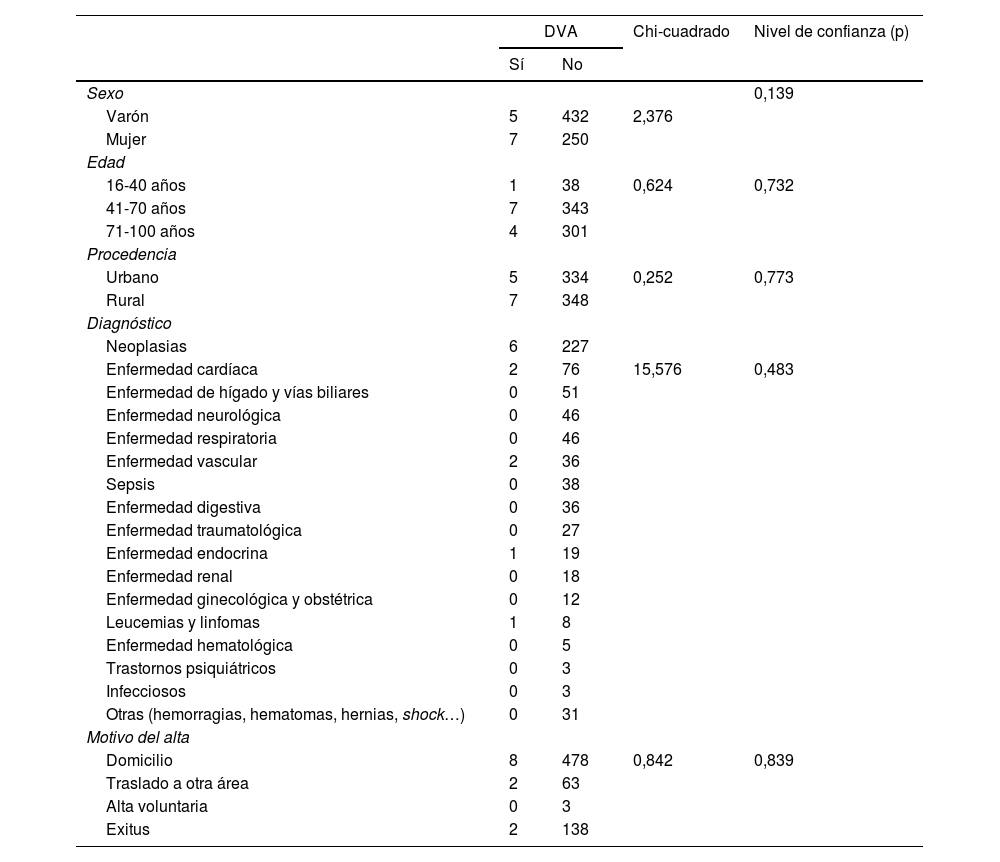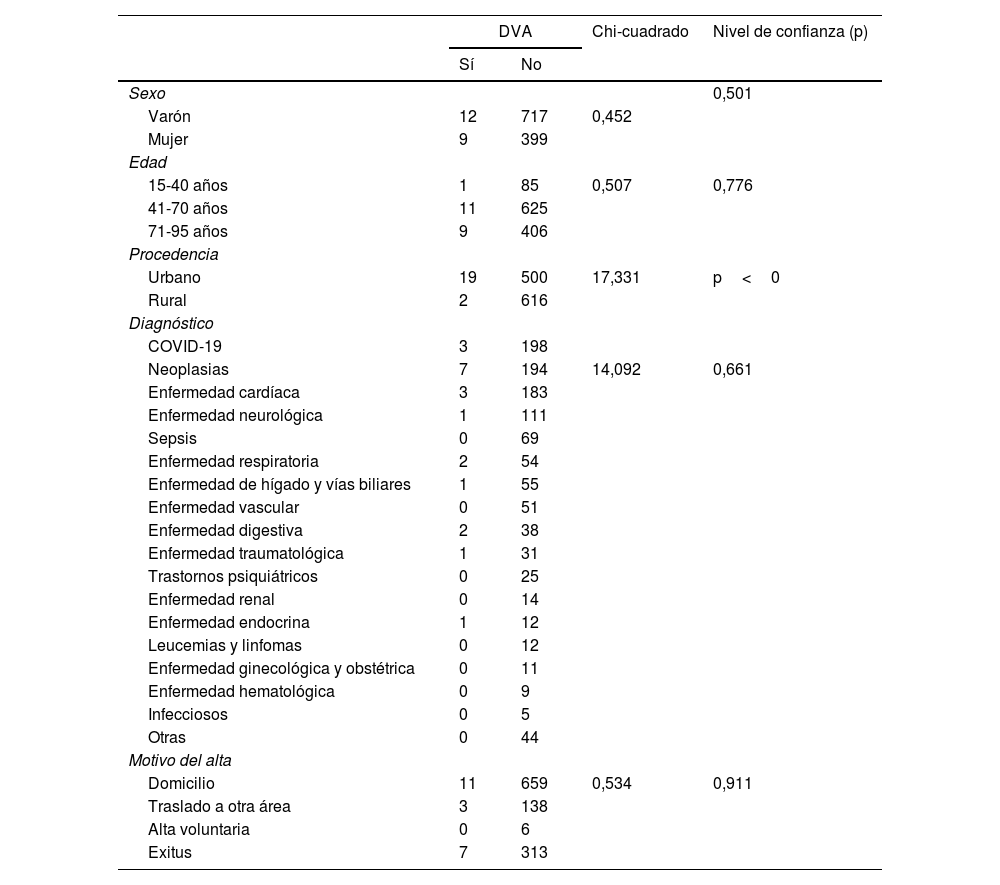La planificación anticipada, y su registro en el documento de voluntades anticipadas (DVA) permite definir metas y preferencias, asegurando el cumplimiento de la voluntad de los pacientes, y facilitando la toma de decisiones a los profesionales ante un proceso de final de vida. En personas ingresadas en una UCI por tratamientos, soporte vital o enfermedades, puede dificultarse la comunicación.
ObjetivosIdentificar cuántos pacientes ingresados/as en una UCI tenían el DVA registrado durante los años 2019 y 2021, y estudiar las relaciones con la edad, el sexo, la enfermedad, la población de procedencia, el motivo de alta, y si el registro fue anterior o posterior al ingreso, y estudiar si hubo cambios en el registro tras el primer año de pandemia.
MetodologíaEstudio descriptivo transversal realizado en una UCI de Zaragoza durante los años 2019 y 2021. La población a estudio fueron todos/as los/as pacientes ingresados durante el periodo de estudio. Se realizó un análisis descriptivo y bivariado de las variables a estudio, estableciendo un nivel de confianza de p<0,05.
ResultadosEn el año 2019 hubo 694 personas ingresadas, siendo un 63% varones, con una edad media de 66 años (DE: 14,5). El 1,7% tenía el DVA registrado. Tres de 12 personas registraron su DVA tras el ingreso en la UCI. En el año 2021 hubo 1.137 pacientes ingresados, siendo la mayoría varones (64,1%), con una edad media de 63,43 años (DE: 14,6). El 1,8% de los/as pacientes ingresados/as en el año 2021 tuvieron el DVA registrado. Cuatro personas de 21 registraron el DVA tras el ingreso en la UCI. Únicamente se pudo establecer relación entre tener registrado el DVA y la procedencia en el año 2021, siendo más frecuente en las personas que vivían en ciudad.
ConclusiónEl registro del DVA en los/as pacientes ingresados/as en nuestro servicio fue escaso, sin observarse diferencias entre los años 2019 y 2021. La mayoría tenían el DVA registrado antes de ingresar en la UCI, por lo que se considera importante aumentar la conciencia de hacer una adecuada planificación de los deseos de atención en los últimos días de vida.
Advance planning, and its registration in the advance directives document, makes it possible to define goals and preferences, assuring patients of the fulfillment of their wishes, and facilitating decision making by professionals in an end-of-life process. In people admitted to an ICU for treatment, life support or pathologies, communication can be difficult.
ObjectivesTo identify how many patients admitted to an ICU had VAD recorded during the years 2019 and 2021, and to study the relationships with age, sex, pathology, population of origin, reason for discharge, and whether the record was before or after admission, and to study whether there were changes in the record after the first year of the pandemic.
MethodologyCross-sectional descriptive study carried out in an ICU in Zaragoza during the years 2019 and 2021. The study population consisted of all patients admitted during the study period. A descriptive and bivariate analysis of the variables under study was performed, establishing a confidence level of P<.05.
ResultsIn 2019 there were 694 people admitted, 63% of whom were men, with a mean age of 66 years (SD: 14.5). 1.7% had VAD registered. Only 3 of 12 persons registered their VAD after ICU admission. In 2021 there were 1,137 patients admitted, the majority being men (64.1%), with mean age 63.43 years (SD: 14.6). Of the patients admitted in 2021, 1.8% had VAD recorded. Only 4 people out of 21 registered VAD after admission to the ICU. Only a relationship could be established between having registered VAD and origin in the year 2021, being more frequent in those who lived in the city.
ConclusionThe registration of VAD in patients admitted to our service was scarce, with no differences observed between the years 2019 and 2021. Most had the DVA registered before admission to the ICU, so it is considered important to raise awareness of making adequate planning of care wishes in the last days of life.







